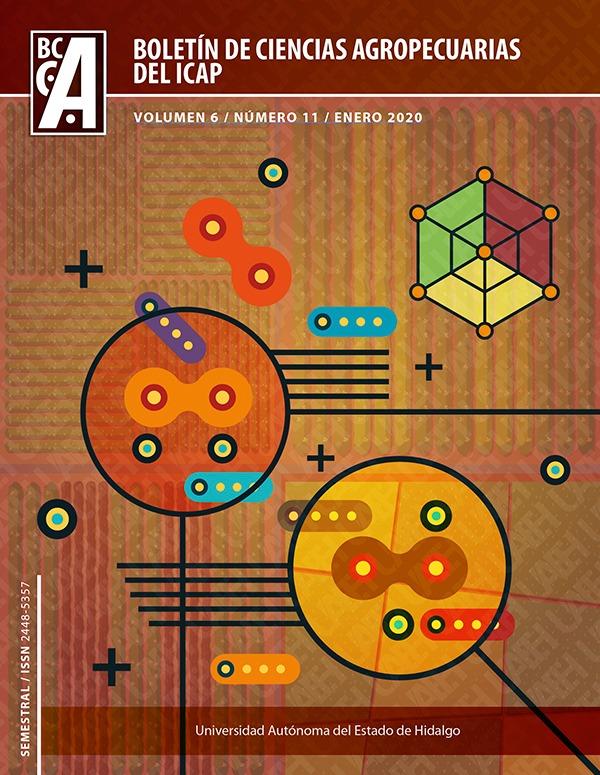Cocoa pod hull flour: An option for the use of agroindustrial waste
Abstract
The growing concern about the use of agroindustrial waste has generated the search for processes of transformation and reuse of these. Which are little exploited, because their chemical composition and possible transformations are unknown. In the cocoa industry, the cocoa pod shell is discarded in the crops, where it decomposes, spreading the Phytophora spp. Fungus that contaminates the healthy plantation, causing losses to the producers, as well as environmental problems. Therefore, the following research study aims to determine the morphometric characteristics, the proximal chemical analysis and the antioxidant capacity in the cocoa pod shell meal, to evaluate its viability as a raw material. Determining performance, proximal chemical analysis, phenols and antioxidant capacity. Obtaining a percentage of yield of 29%, morphologically reaches a maximum height of 36nm. The proximal chemical analysis showed a crude fiber percentage of 26.75%, ash 8.41%, humidity 6.26%, protein 5.27% and fat 0.69%. Reporting a content of phenolic compounds of 8,48 mg of gallic acid / g dry sample, concluding that cocoa pod husk flour provides ashes and fiber, as well as showing antioxidant capacity, which makes it a raw material with agroindustrial interest.
Downloads
References
Panak, B.J., Ackar, D., Jokic, S., Jozinovic, A., Babic, J., Milicevic, B., Subaric, D. y Pavlovic, N. (2018). Cocoa Shell: A by-product with great pontential for wide application. Molecules, 23, 1404-1418.
Villamizar, Y.L., Rodríguez, J.S., y León, L.C. (2016). Caracterización fisicoquímica, microbiológica y funcional de harina de cáscara de cacao (Theobroma cacao L.) variedad CCN-51.1. Cuaderno Activa, 1 (9), 65-75.Silva G, Galeano E, Correa J. Compliance with the treatment. Acta Médica Colombiana 2005; 30(4): 268–73.
World Cocoa Foundation. (08 de Marzo de 2019). Obtenido de World Cocoa Foundation: https://www.worldcocoafoundation.org/
Leao, D.P., Franca, A.S., Oliveira, L.S., Bastos, R., y Coimbra, M.A. (2017). Physicochemical characterization, antioxidant capacity, total phenolic and proanthocynidin content of flours prepared from pequi (Caryocar brasilense Camb.) fruit by-products. Food Chemistry, 225, 146-153.
García, O., Aiello, C., Peña, M.C., Ruiz, J.L., y Acevedo, I.C. (2012). Caracterización físico-química y propiedades funcionales de la harina obtenida de granos de quinchoncho (Cajanus cajan (L.) Millsp.) sometidos a diferentes procesamientos. Revista Cientifica UDO Agrícola, 12 (4), 918-928.
Marín-Bustamante, M.Q., Chanona-Pérez, J.J., Güemes-Vera, N., Arzate-Vázquez, I., Perea-Flores, M.J., Mendoza-Pérez, J. A., Calderón-Domínguez, G. y Casarez-Santiago, R.G. (2018). Evaluation of physical, chemical, microstructural and micromechanical properties of nopal spines (Opuntia ficus-indica). Industrial Crops & Producsts, 123, 707-718.
A.O.A.C. (1995). Official Methods of Analysis (16 edición ed.). Washington D.C. USA: Association of Official Analytical Chemist.
Ondo, S.E., Ryu, G.H. (2013). Physicochemical and antioxidant properties of extruded corn meal with natural cocoa powder. Food Science and Biotechnology, 22, 167-175.
Brand-Williams, Cuvelier, M.E., y Berset, C.L. (1995). Use of a free radical method to evaluate antioxidant activity. LWT-Food Science and Technology, 28 (1), 25-30.
Benzie, I.F., y Strain, J.J. (1996). The Ferric Reducing Ability of Plasma (FRAP) as a Measure of “Antioxidant Power”: The FRAP Assay. Analytical Biochemistry, 239 (1), 70-76.
Siddhuraju, P., y Becker, K. (2007). The antioxidant and free radical scavenging activities of processed cowpea (Vigna unguiculata (L.) Walp.) seed extracts. Food Chemistry, 101 (1), 10-19.










